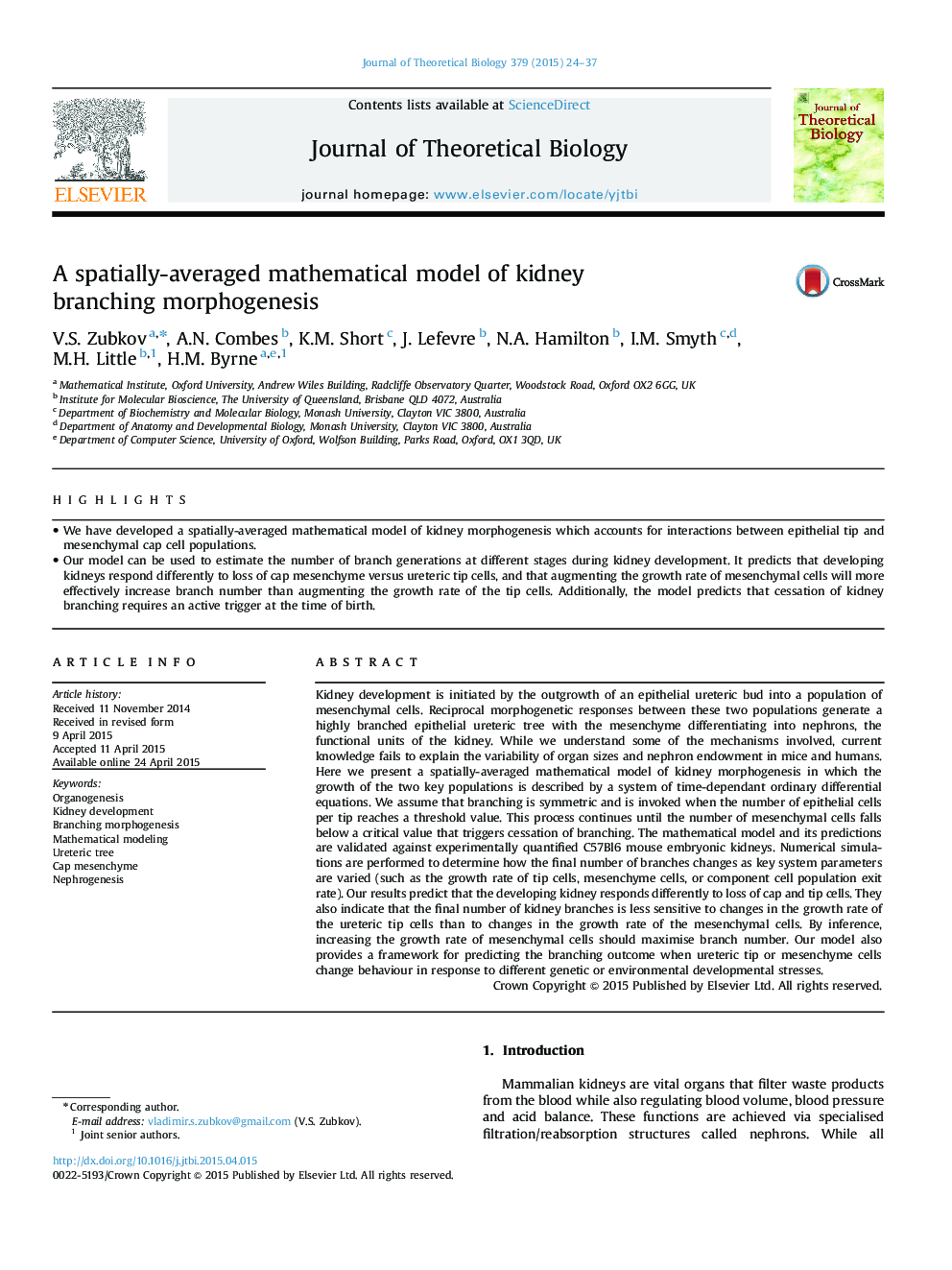| کد مقاله | کد نشریه | سال انتشار | مقاله انگلیسی | نسخه تمام متن |
|---|---|---|---|---|
| 4496019 | 1623831 | 2015 | 14 صفحه PDF | دانلود رایگان |
• We have developed a spatially-averaged mathematical model of kidney morphogenesis which accounts for interactions between epithelial tip and mesenchymal cap cell populations.
• Our model can be used to estimate the number of branch generations at different stages during kidney development. It predicts that developing kidneys respond differently to loss of cap mesenchyme versus ureteric tip cells, and that augmenting the growth rate of mesenchymal cells will more effectively increase branch number than augmenting the growth rate of the tip cells. Additionally, the model predicts that cessation of kidney branching requires an active trigger at the time of birth.
Kidney development is initiated by the outgrowth of an epithelial ureteric bud into a population of mesenchymal cells. Reciprocal morphogenetic responses between these two populations generate a highly branched epithelial ureteric tree with the mesenchyme differentiating into nephrons, the functional units of the kidney. While we understand some of the mechanisms involved, current knowledge fails to explain the variability of organ sizes and nephron endowment in mice and humans. Here we present a spatially-averaged mathematical model of kidney morphogenesis in which the growth of the two key populations is described by a system of time-dependant ordinary differential equations. We assume that branching is symmetric and is invoked when the number of epithelial cells per tip reaches a threshold value. This process continues until the number of mesenchymal cells falls below a critical value that triggers cessation of branching. The mathematical model and its predictions are validated against experimentally quantified C57Bl6 mouse embryonic kidneys. Numerical simulations are performed to determine how the final number of branches changes as key system parameters are varied (such as the growth rate of tip cells, mesenchyme cells, or component cell population exit rate). Our results predict that the developing kidney responds differently to loss of cap and tip cells. They also indicate that the final number of kidney branches is less sensitive to changes in the growth rate of the ureteric tip cells than to changes in the growth rate of the mesenchymal cells. By inference, increasing the growth rate of mesenchymal cells should maximise branch number. Our model also provides a framework for predicting the branching outcome when ureteric tip or mesenchyme cells change behaviour in response to different genetic or environmental developmental stresses.
Journal: Journal of Theoretical Biology - Volume 379, 21 August 2015, Pages 24–37
